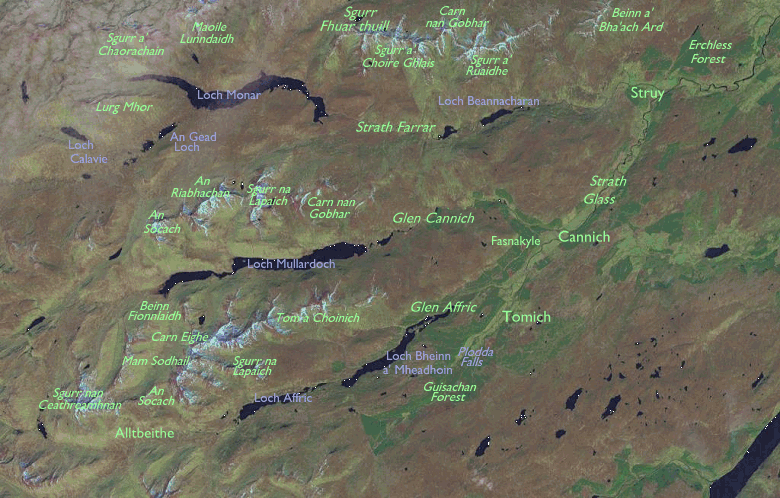

Affric, Cannich and Strathfarrar - and the lesser glens on their periphery - are a world of mountain, lake and forest. The lakes are dammed and drive hydroelectric power stations, but fortunately both the dams and the power plants - built just after the second world war - were planned sensitively and have become monuments of grandeur that fit their setting perfectly. Around the lakes and along the glens are strips of original, natural Caledonian pine forest that show the Scottish Highlands at their best. Between the reservoirs stand ranges of mountains that attract climbers and hikers from all over the world, mountains that include the twin summits of Carn Eighe and Mam Sodhail, the highest peaks north of the Great Glen.
The public roads into the glens feed the reservoir, forest and private estate roads that provide easy access for the hiker and cyclist into this world of magnificent scenery, and in the upper reaches of the glens there are wild, lonely paths leading across the watershed to Kintail and the west coast. Cannich, Tomich and Struy are the only villages in the area worthy of the description - all other habitation consists of isolated cottages, lodges and crofts. Far in the west of the region stands the isolated Altbeithe youth hostel, in reality nothing more than a shepherd's hut. Miles from anywhere and with no electricity or water supply, it's a place that only dedicated adventurers seek out. But almost any spot in this magnificent emptiness is a destination worth visiting, for there is arguably nowhere else in Britain that can boast such a consistently high standard of aesthetic beauty.
 |
Loch Beinn a Mheadhoin, seen on a coach trip in September 1979 |
 |
Glen Affric on a beautiful evening in May 1980 |
 |
Erchless Forest hill track, September 1997 |
 |
Guisachan Estate and Plodda Falls, Aug 2000 |
 |
Mam Sodhail climb, August 2000 |
Back to Scottish Highlands index page
This page last updated 16th January 2005
![]()